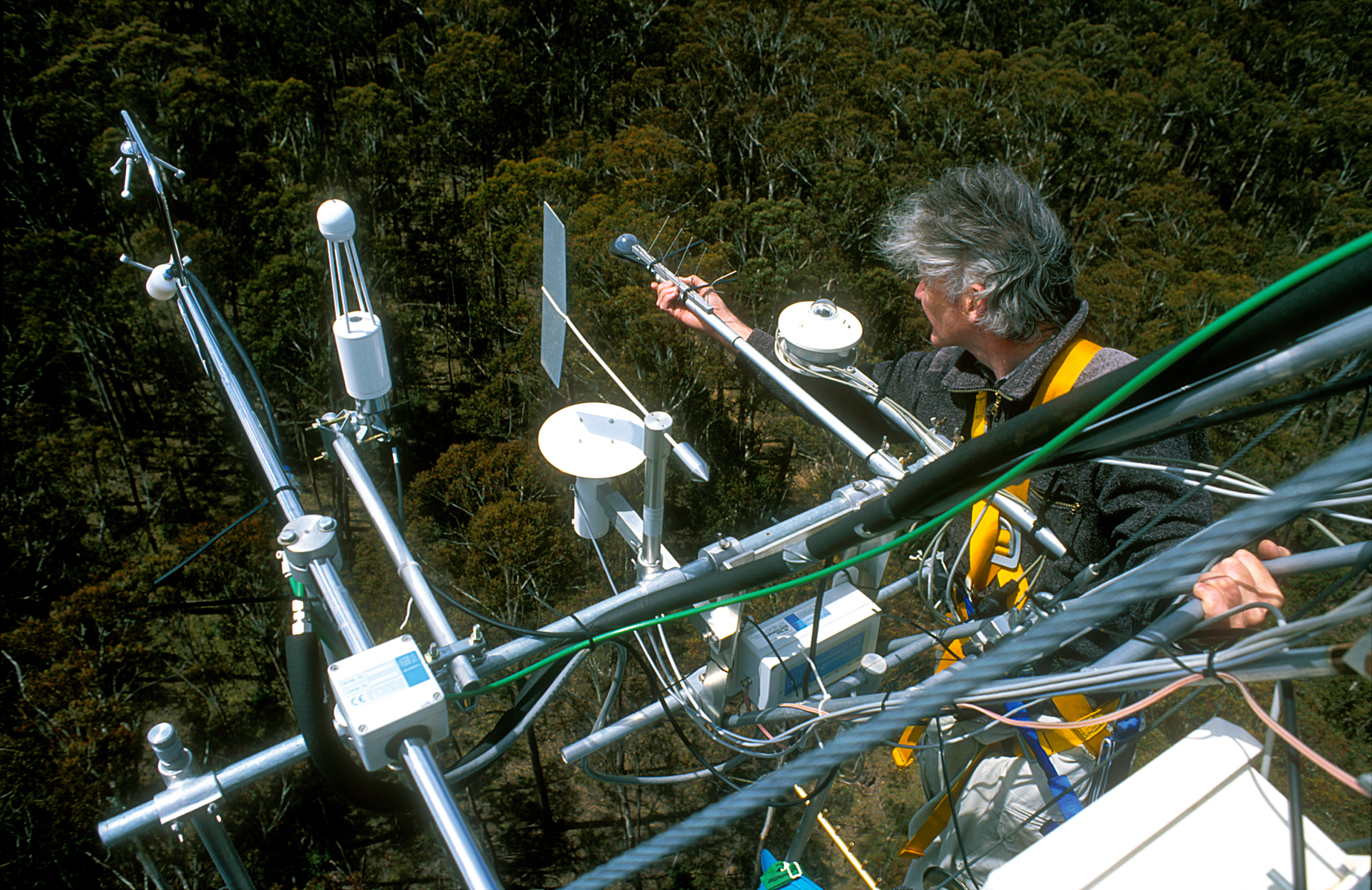Australia’s Biodiversity series – Part 12: Conclusions
When talking about the fate of biodiversity it’s easy to get bogged down in doom and gloom—we know that it’s in decline, that human populations and demand for resources continue to grow, and therefore the pressure we’re putting on other species is increasing, and that big gaps remain in our understanding of the biodiversity that’s out there.
CSIRO technician Dale Hughes installing micrometeorological instruments on top of a 75 meter tower as part of the national OZFLUX study,
Tumbarumba, NSW. 2003.
Australia is developing a vast capacity for monitoring the natural environment through the Terrestrial Ecosystem Research Network. Image: Gregory Heath.
But there are solutions. Since the concept of biodiversity first emerged in the 1980s, the science dedicated to understanding our natural systems has come a long way. With the emergence of new technologies it has become possible to find out far more about the species we share the planet with, and we can do it with far more efficiency.
It’s these big challenges and scientific solutions that we focused on in our book, Biodiversity: Science and Solutions for Australia. In the twelfth and final video in our Australia’s Biodiversity series, the book’s editors, Dr Steve Morton, Dr Mark Lonsdale and Dr Andy Sheppard, engage in a panel discussion about the future of biodiversity science in Australia:
You might like to read the concluding chapter of CSIRO’s Biodiversity Book to find out more about the scientific solutions that could help us address the big threats to Australia’s biodiversity.
And if you’ve been inspired to get more involved in the management of our biodiversity, there’s a lot you can do—even from your computer. Visit the Atlas of Living Australia to find out about volunteer opportunities.
You can find all the videos from our biodiversity series on our YouTube channel.



13th October 2014 at 11:08 am
Very good article on Biodiversity. Thank you very much!
Bradley Witham
1st October 2014 at 6:10 pm
Best program so far. How about demonstrating some of the new techniques in use and the value of the information provided.?
2nd October 2014 at 4:20 pm
Thanks Paddy. Our video series was designed as a bit of an intro to the topics which are cover more in-depth in our Biodiversity Book.
Although, you might be interested in some more specific info on some of the new technology that’s discussed:
Wet Tropics rainforest monitoring
Assessing aquatic biodiversity with DNA technology
A continent-wide inventory of soil biodiversity
Monitoring our oceans with robotic floats
1st October 2014 at 4:02 pm
Thanks for producing such an interesting series and the Biodiversity Book, which I have just downloaded. I am a retired civil/structural engineer and IT practitioner and spend some of my time blogging on sustainable population and climate change. I expect to get a lot of useful stuff out of your material which I can quote on my blog (with appropriate attribution, of course!). If anyone is interested, my site is reengineeringaustralia.com. Be warned, though – I tend to be an essayist, rather than a commentator on current affairs, and a visit to the index page might be useful in order to focus on topics of interest.
1st October 2014 at 4:10 pm
A pleasure Jim. Enjoy the book and keep blogging!